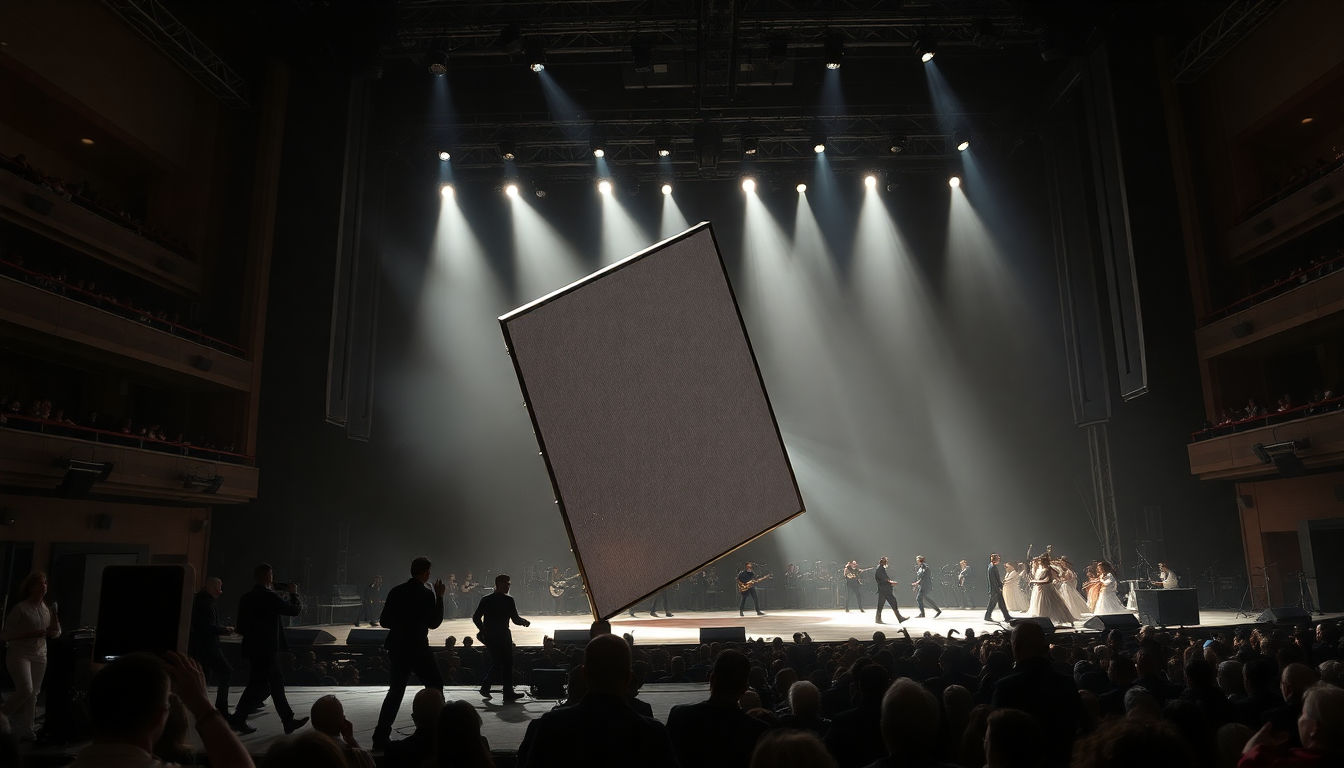Table of Contents
The world of entertainment is often a source of excitement and joy, but it can also harbor some unexpected dangers. A recent incident at a concert has brought to light the serious consequences of negligence within this vibrant industry. This unfortunate event centers around Mo Li Kai-yin, a 30-year-old dancer who suffered life-changing injuries when a massive LED screen fell during a performance by the popular Cantopop band Mirror in Hong Kong. In the wake of this traumatic experience, Li has taken the brave step of initiating legal proceedings against multiple parties, seeking compensation for the catastrophic injuries sustained.
The Incident and Its Aftermath
On July 28, 2022, the Hong Kong Coliseum became the backdrop for a tragic accident that would alter Mo Li’s life forever. During a live performance, a staggering 500kg LED screen—four meters by four meters—detached from its suspension and struck Li, leaving him paralyzed from the neck down. This severe injury has not only impacted his physical capabilities but also taken an emotional toll, necessitating ongoing treatment overseas. Can you imagine the challenges he faces every day?
Li’s legal team has filed three writs in the High Court, alleging negligence and breach of duty of care against several defendants, including the Leisure and Cultural Services Department, which oversees the venue, as well as the contractor responsible for the stage setup. These accusations raise important questions about the safety measures in place for both performers and audience members. Who is really accountable when things go wrong?
Legal Implications and Responsibilities
This lawsuit highlights the critical importance of accountability in the entertainment sector. Organizing large-scale events requires all parties involved to strictly adhere to safety protocols to prevent accidents. Li’s claims against various defendants illustrate the legal obligations that event organizers, contractors, and venue operators have in providing a safe environment. This incident is a stark reminder of the potential fallout when these responsibilities are neglected.
Moreover, the case shines a light on the complex nature of liability in such situations. Determining fault will likely involve a thorough investigation into the circumstances leading up to the incident, including equipment maintenance and the adequacy of safety measures. As the case unfolds, it will be crucial to examine all aspects of the event’s planning and execution, which could set important precedents for future events in the industry. What lessons can be learned to ensure this doesn’t happen again?
The Broader Impact on the Entertainment Industry
This tragic incident is not just a personal tragedy for Mo Li; it also raises broader concerns about safety standards in live entertainment. As audiences flock to concerts and performances, the expectation of a secure environment is paramount. The fallout from this case may lead to increased scrutiny of safety practices across the industry, prompting a reevaluation of current protocols and possibly resulting in stricter regulations governing live events.
In light of this incident, stakeholders in the entertainment industry must prioritize safety to protect both performers and audiences alike. The legal proceedings initiated by Li may serve as a catalyst for change, encouraging a culture of safety that values the well-being of everyone involved. As this case continues to develop, it will be essential for the industry to learn from this experience, ensuring that live performances can continue to bring joy without compromising safety. Are we ready to see meaningful changes in the industry?


